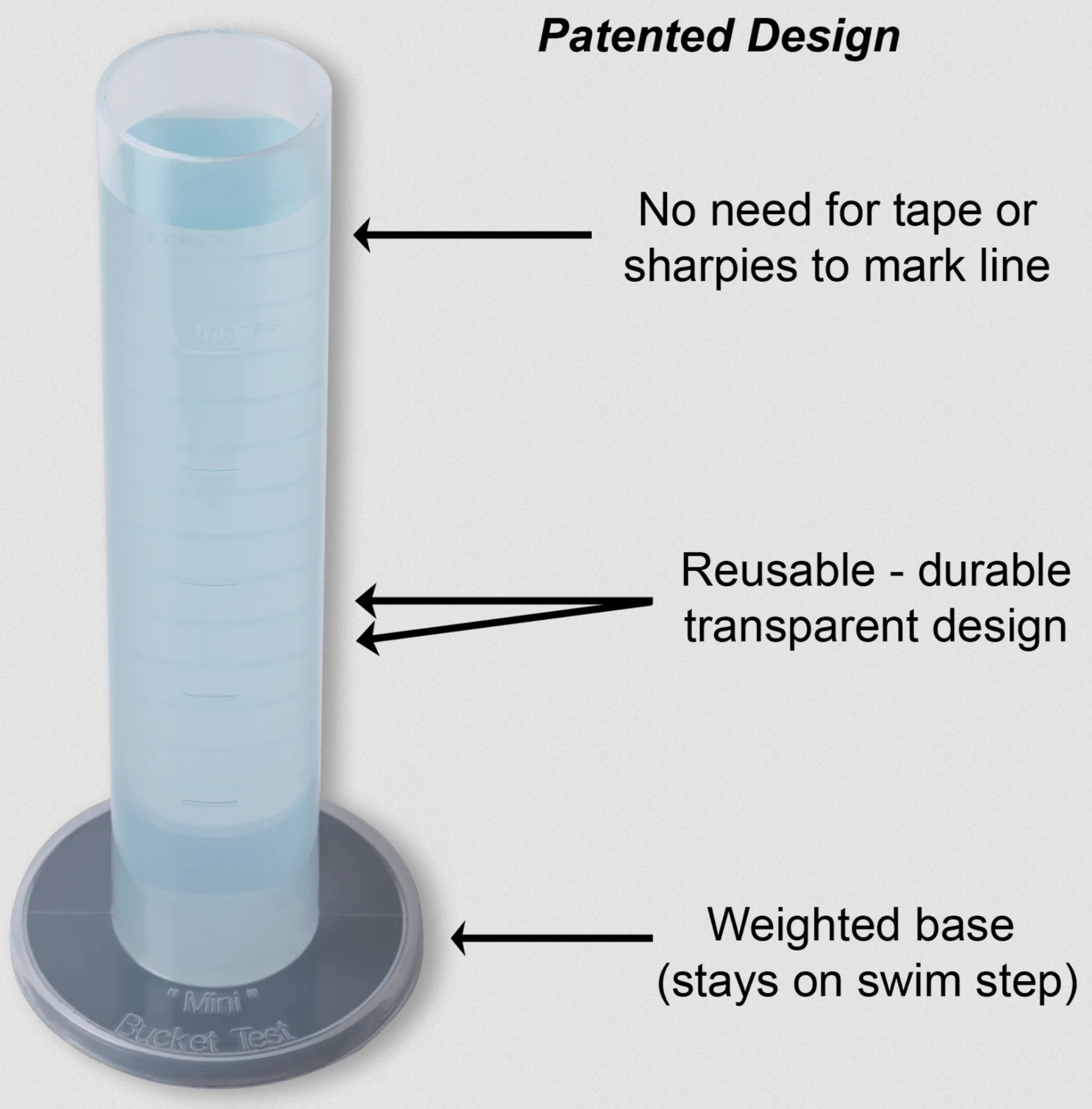Introducing the Mini Bucket Test
This is the simplest pool leak detector on earth! Come see us today and pick yours up! They are reusable!
The Simplest Pool Leak Detector on Earth!
See how it works…
3 Simple Steps
Step 1:
Turn off your pool’s water features and auto-fill system (if installed). Leave the main pool pump running.
Step 2:
Place the Mini Bucket Test on the first swim step of your pool. Fill it up so the water level on the inside of the tester matches the pool’s water level.
Step 3:
Come back in a day or two and check it out. That’s it!
Getting the most out of your Mini Bucket Test:
Several factors may have an effect on the test results:
- Running pool equipment
- Check valves that may not seal correctly
- Wind
- Rain,
- Dog’s drinking out of the tester
- Cannonballs, etc…
Here’s how you can get the most accurate results out of your Mini Bucket Test pool leak detector:
Pool Equipment Configuration:
Turn off Auto-Fill System and any water features such as waterfalls.
*Start the test with your pool pump running. Run the pump for 24 hours during the test. When you return to check the status of the water levels, make sure your pool pump is still running. This gives the most consistent results.
There are many more pool equipment configurations you can use, but the above configuration should give you the basic “IS my pool leaking?” info you need before making the call to your pool professional for help.
Nature’s Factors:
Other factors, such as wind, rain, pets drinking out of the tester, etc… can play a small role in test results.
Wind: If it’s a bit windy, the closer the water is to the top of the Mini Bucket Test, the more accurate your results will be.
Do not allow pets or people in the pool during the test.
*Try to perform the test on a calm weather day and not an extreme weather day. The calmer the weather, the more accurate the results.




